Every week or every day, we attend Mass or Divine Liturgy, and it is largely the same. The Eucharistic prayer is just one of a few options, a lot of other prayers like the introductory and Communion rite are always the same.

I generally like change and difference: I like a podcast that keeps a consistent format, but I don’t like listening to an episode again. One podcast I listen to has a few episodes that are basically the best segments from recent months. Those are the only regular episodes of that podcast I intentionally skip. I personally don’t listen to the same music on repeat much preferring podcasts and audiobooks while exercising, driving or cleaning the house.
Yet something about the consistency of the Liturgy is calming and reassuring. The repetition is of a different type. For a long time, I struggled to put my finger on it. Then recently I was reading and contemplating Vatican II on the liturgy. This led me to realize why this repetition is so comforting: the liturgy connects our time with eternity. The liturgy allows us to touch eternity and gives us a foretaste of eternity with God.
The first paragraphs of Sacrosanctum Concilium from Vatican II talk about this connection between time and eternity. I read this then had a day of personal retreat to reflect on this text.
The Liturgy and Christ’s Redemption
It starts early and notes even in the second paragraph that Christ’s redemption is accomplished through the liturgy. Christ redeemed us in time on the cross but this is an event beyond time: this is how Mary can be conceived without sin and how the Old Testament heroes can be saved. Jesus’ salvation is his love from all eternity brought into time. This same paragraph mentions that the liturgy reveals “the real nature of the true Church.” We think of the visible Church on earth but that is only 1 part of 3: we also have the Church in heaven and purgatory, the Church in eternity.
Paragraph five of Sacrosanctum Concilium notes how in Christ, “the perfect achievement of our reconciliation came forth, and the fullness of divine worship was given to us.” God, from all eternity wanted to reconcile us to himself: he reaches from eternity into time to save us. But this quote also notes that Jesus is the fullness of divine worship: the worship in the Mass on earth reflects the fuller worship for all eternity with Jesus. Heaven is nothing more than being with Jesus: it is sharing his eternity.
This same paragraph also quotes 1 Timothy 2:4 to say, God “wills that all men be saved and come to the knowledge of the truth.” This is a will coming forth from the Trinity existing outside of time. It is a will they need to express temporally for our poor human nature to understand. The Sacraments, presented through the liturgy are what saves us. The liturgy is God’s eternal will brought into our time and space.
The Trinity in the Liturgy
When we speak of the Trinity, we see how the Father sent the Son, but then the Son sends the apostles and us to bring his message and his salvation to the whole world. Paragraph six of Sacrosanctum Concilium notes this but then connects it to the liturgy. The paragraph notes the apostles “by preaching the gospel to every creature, they might proclaim that the Son of God, by His death and resurrection, had freed us from the power of Satan and from death, and brought us into the kingdom of His Father.” Where is this salvation made manifest? In the liturgy: as noted above, we are saved through baptism and raised to or heights in the Eucharist, both of which we get via the liturgy.
Paragraph 7 speaks of Christ being fully present in the liturgy such as through the priest, the Eucharist and the Altar. As he is present in this way, he is also present in the Trintiy’s perfect eternity. This again connects the temporal liturgy with eternity.
Finally, the eighth paragraph notes, “In the earthly liturgy we take part in a foretaste of that heavenly liturgy which is celebrated in the holy city of Jerusalem toward which we journey as pilgrims, where Christ is sitting at the right hand of God, a minister of the holies and of the true tabernacle.” This reinforces the principle that the liturgy here on earth is directly connected to the eternal liturgy in heaven where we will worship God forever.
Prayer and the Liturgy
I read these and recorded part of my Vatican II in a Year podcast. Then, the next day, I had a personal day of retreat (Poustinia). I had not scheduled a theme beforehand. However, as I tried to pray, God kept bringing me back to reflect on this connection Jesus gives us in the liturgy. The liturgy connects us not only across time and space, but to God’s eternity beyond time and space. Jesus invites us to his presence: we see him temporally in the Eucharist, but this points to something beyond in his presence in heaven and in eternity. (I am releasing this this week as the paragraphs I am reflecting on are broadcast this week on my podcast.)
The liturgy thus, is not just another thing we do, but through the Eucharist, we connect most fully to God. It comes from his eternal love for us and leads to our eternity with him in heaven. It is something beyond and above us. So often in liturgical discussions, we get caught up in exact elements or in specific rites. These have some value. But beyond any detail, the liturgy is God coming to us in eternal love and bringing us towards his eternal love. It is eternity made temporal.

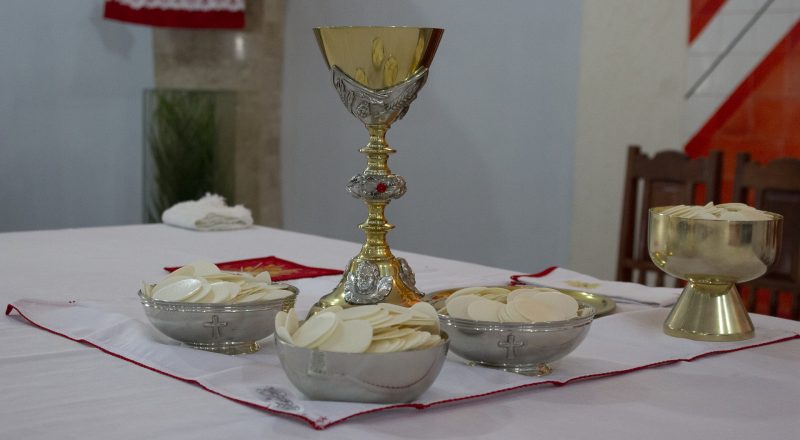
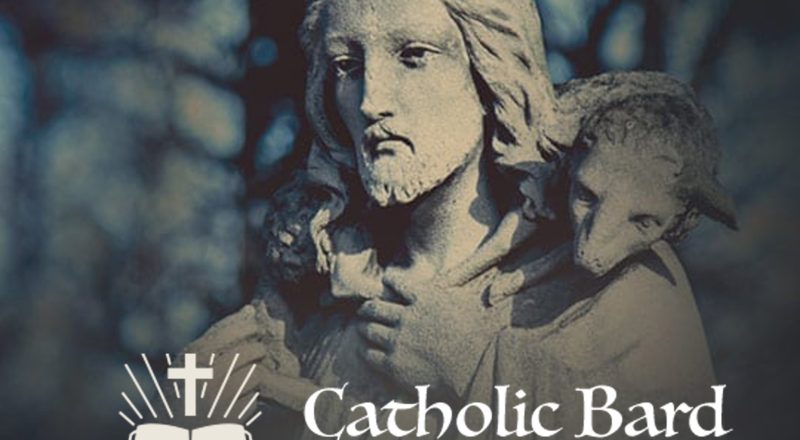
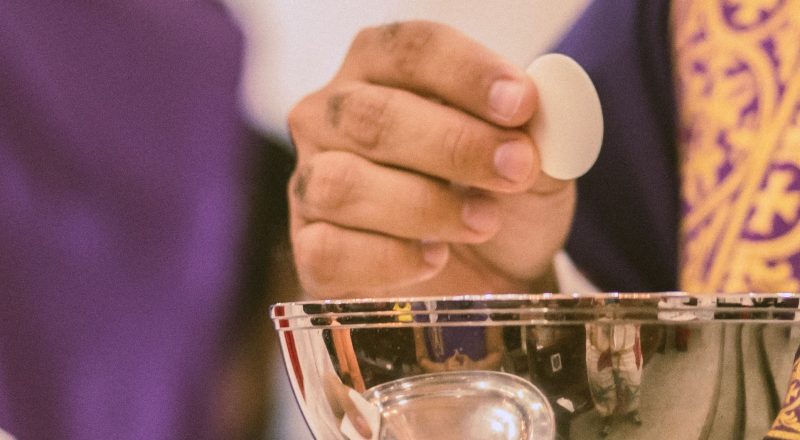
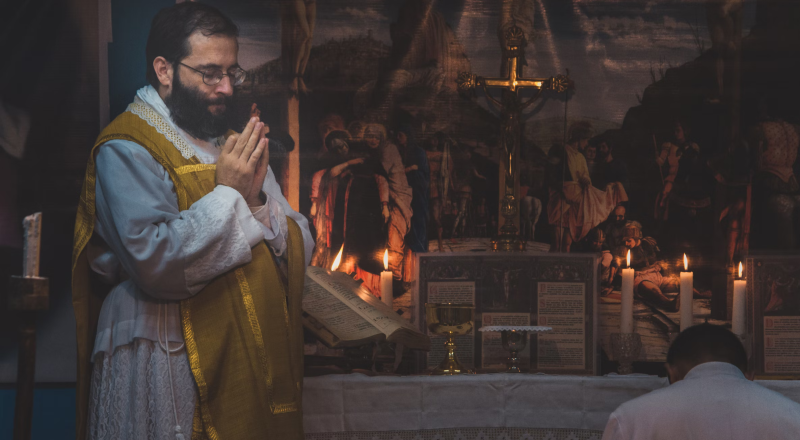
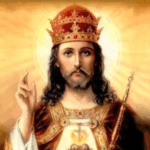
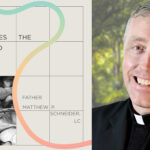

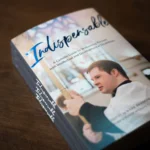
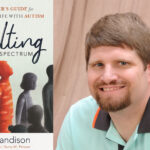
This reflection was so profound! I’ve always found comfort in the repetition of the Liturgy, but your insights on how it connects us to eternity gave me a whole new perspective.
This post beautifully captures the profound nature of the Liturgy. I’ve often felt a sense of timelessness during Mass, especially in the Eucharist, but your insights on how it connects us to eternity gave me a new perspective.
Note from Fr. Matthew: The same person made two similar comments so I combined them.
After 5 1/2 years of attending mass, I can say the reason I ‘have to’ go every day is because I don’t know how to thank God on God’s level… and the mass is Jesus thanking the Father, while allowing us to share in His gratitude, on more of an eternal scale (as you are saying). I do however think the changes you mentioned do in fact come, and quite frequently (relative to all space and time) but it’s not God or His expression/communication between the 3 persons of the Trinity that changes, it is us (remember God is immutable)… and if we respond accordingly, and allow Him to transform us into the living saints we are called to be, then one’s life can in fact influence the liturgy – just look at the parts where antiphons, collect, closing prayer, etc. are shaped to honor the saint(s) of the day. This can take decades or even centuries to play out, which is but a blink of the eye to God, so we also need the virtue of patience to be given to us.
As a layman (OCDS community member) I can also attest to the benefit of graces and mercy that seem to be increased by daily mass and the LOH, however, us lay people also need regular and sometimes frequent, reconciliation in order to keep our hearts open to the graces that will transform us into ‘the perfect version of ourselves’.
I believe as a priest, the graces available to you are different, because your calling is to administer the sacraments (primarily to us, wretched sinners)… but alas, God may have something very unique for you in store, and upon fulfilling that call, hopefully one day we will be praying, “St Matthew Schneider, pray for us!” and perhaps centuries from now, our ancestors will also honor you in the liturgy of the mass all around the world. (St Theresa of Jesus instructed her Carmelites to not limit how much they believe God loves them, as if warning against holding some false humility that places limits on the potential.)
I often joke with our Pastor and Parochial Vicar when we have an ‘ordinary’ day – “Today is a good day to die Father… there’s an open slot on the liturgical calendar waiting for you.”
[…] Open the full article on the frmatthewlc.com site […]
Fr. Schneider, I appreciate your insight on the liturgy’s comforting repetition. It’s so true! The consistency provides a sense of stability and connection to something bigger than our daily lives. The idea of it being a ‘foretaste of eternity’ really resonates. I’ve often felt a similar sense of peace during Mass, now I understand it better.